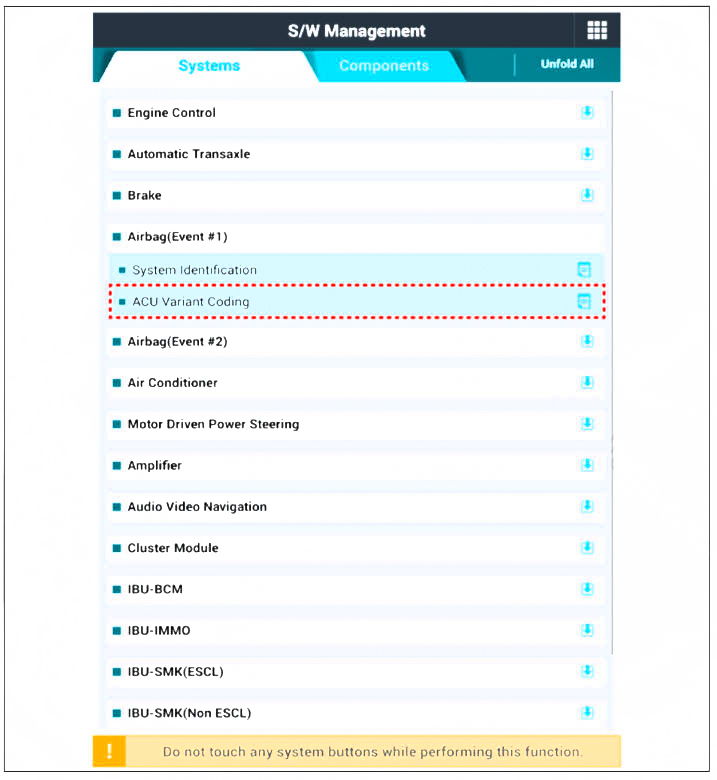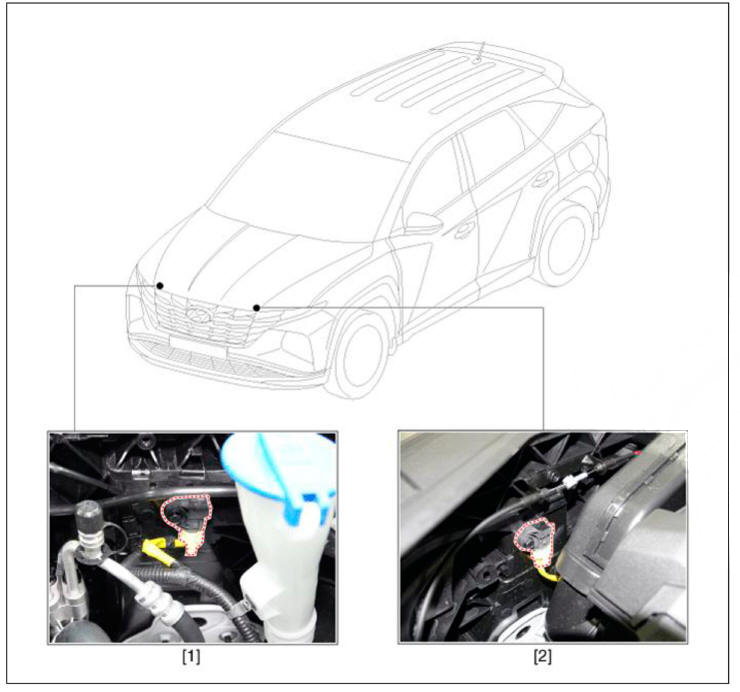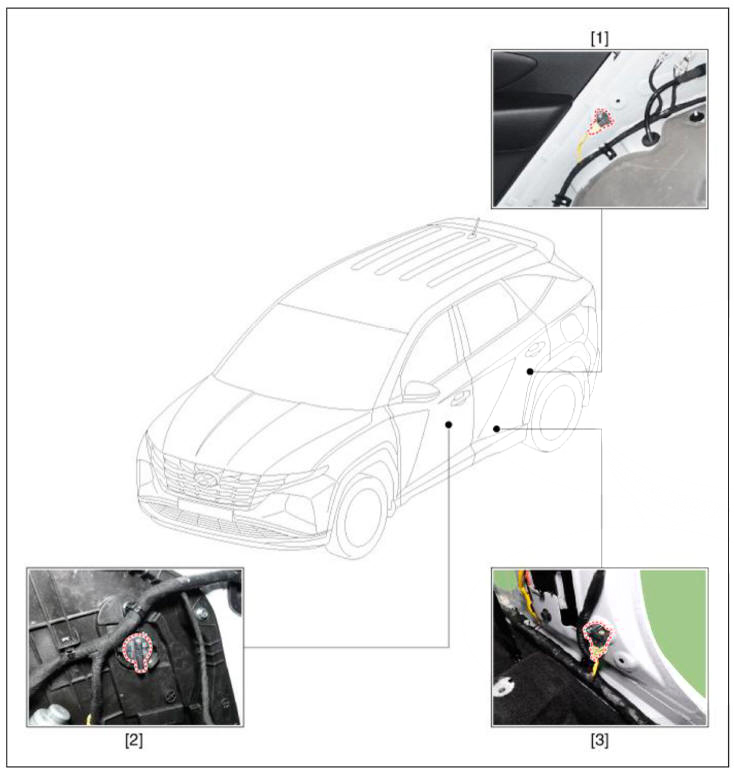Hyundai Tucson: SRSCM - Installation
Hyundai Tucson - Fourth generation (NX4) - (2020-2023) - Workshop Manual / Restraint / SRSCM / SRSCM - Installation
Installation
- Install in the reverse of the removal.
- After installing the SRSCM, confirm proper system operation.
WARNING
SIf the Switch ON the ignition, the SRS indicator light should turn on for about six seconds and then off.
Variant Coding
- Connect the cable of self-diagnosis to the data link connector in driver side crash pad lower panel, and turn on the selfdiagnosis.
- Select "Airbag" and "ACU Variant Coding".

- Perform the "ACU/SRSCM Variant Coding" procedure according to the self-diagnosis screen message.

Description
- The front impact sensors (FIS) are installed on the upper of the side panel in Front End Module (FEM). They are remote sensors that detect acceleration due to a collision at their mounting locations.
- The primary purpose of the Front Impact Sensor (FIS) is to provide an indication of a collition. The Front Impact Sensor(FIS) sends acceleration data to the SRSCM.
Components Location

- Front Impact Sensor (FIS) RH
- Front Impact Sensor (FIS) LH
Removal
- Disconnect the batteiy negative terminal.
WARNING
After disconnecting the cables, wait at least 3 minutes.
- Remove the front impact sensor assembly (B) by loosening the bolt after disconnecting the connector (A).
Tightening torque : 10.8 - 12.8 N m (1.1 - 1.3 kgf m, 8.0 - 9.4 lbf ft)

Installation
- Install in the reverse of the removal.
- After installing the FIS, confirm proper system operation.
WARNING
Switch ON the ignition. The SRS indicator light should turn on for about three-six seconds and then off.
Description
- The Side Impact Sensor (SIS) system consists of two kinds of side impact sensor which are installed at each center of the front door module (left and right) and two rear sensors which are installed in the rear pillar (left and right).
- The Front Side Impact Sensor is also called P-SIS because it detects pressure due to collision at its mounting location.
- The Rear Side Impact Sensor is also called A-SIS because it detects acceleration due to collision at its mounting location.
SRSCM decides deployment of the airbag and the time of deployment through the collision signal of the SIS when collision occurrs.
Components Location

- Gravity Side Impact Sensor (G-SIS) _ C pillar
- Pressure Side Impact Sensor (P-SIS)
- Gravity Side Impact Sensor (G-SIS) _ B pillar
Removal
READ NEXT:
 Pressure Side Impact Sensor (P-SIS)
Pressure Side Impact Sensor (P-SIS)
Disconnect the batteiy negative terminal.
WARNING
After disconnecting the cables, wait at least 3 minutes.
Remove the front door trim.
(Refer to Body - "Front Door Trim")
Disconnect the connector (A) from the pressure side im
 PAB ON/OFF Switch
PAB ON/OFF Switch
Components Location
PAB ON/OFF Switch
Removal
Disconnect the battery negative terminal.
WARNING
After disconnecting the cables, wait at least 3 minutes.
Remove the crash pad side cover.
(Refer to Body - "Crash Pad Side C
SEE MORE:
 Refrigeration Cycle
Refrigeration Cycle
Engine Room
Compressor
Service port (Low pressure)
A/C pressure transducer (APT)
Service port (High pressure)
Suction & Liquid pipe assembly
Expansion valve cover
Interior
Auto defogging sensor
Photo sensor
PM s
 Airbag Disposal
Airbag Disposal
When you scrap a vehicle equipped with an airbag, you must deploy it first.
When you deploy an airbag, you need to have a skilled mechanic do the work. The
used airbag should
not be reinstalled in another vehicle for reuse.
WARNING
Upon de
Information
- Home
- Hyundai Tucson - Fourth generation (NX4) - (2020-2023) - Owner's Manual
- Hyundai Tucson - Fourth generation (NX4) - (2020-2023) - Workshop Manual